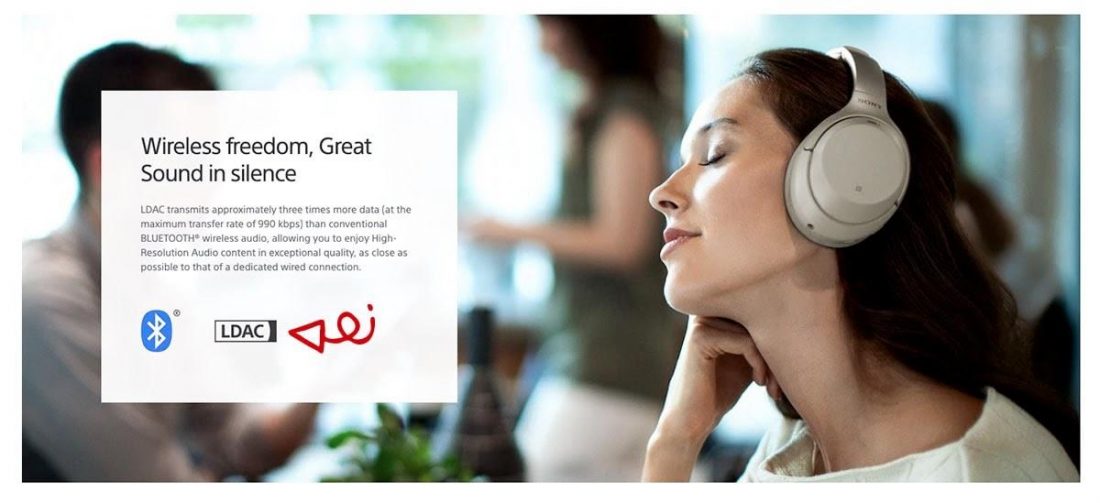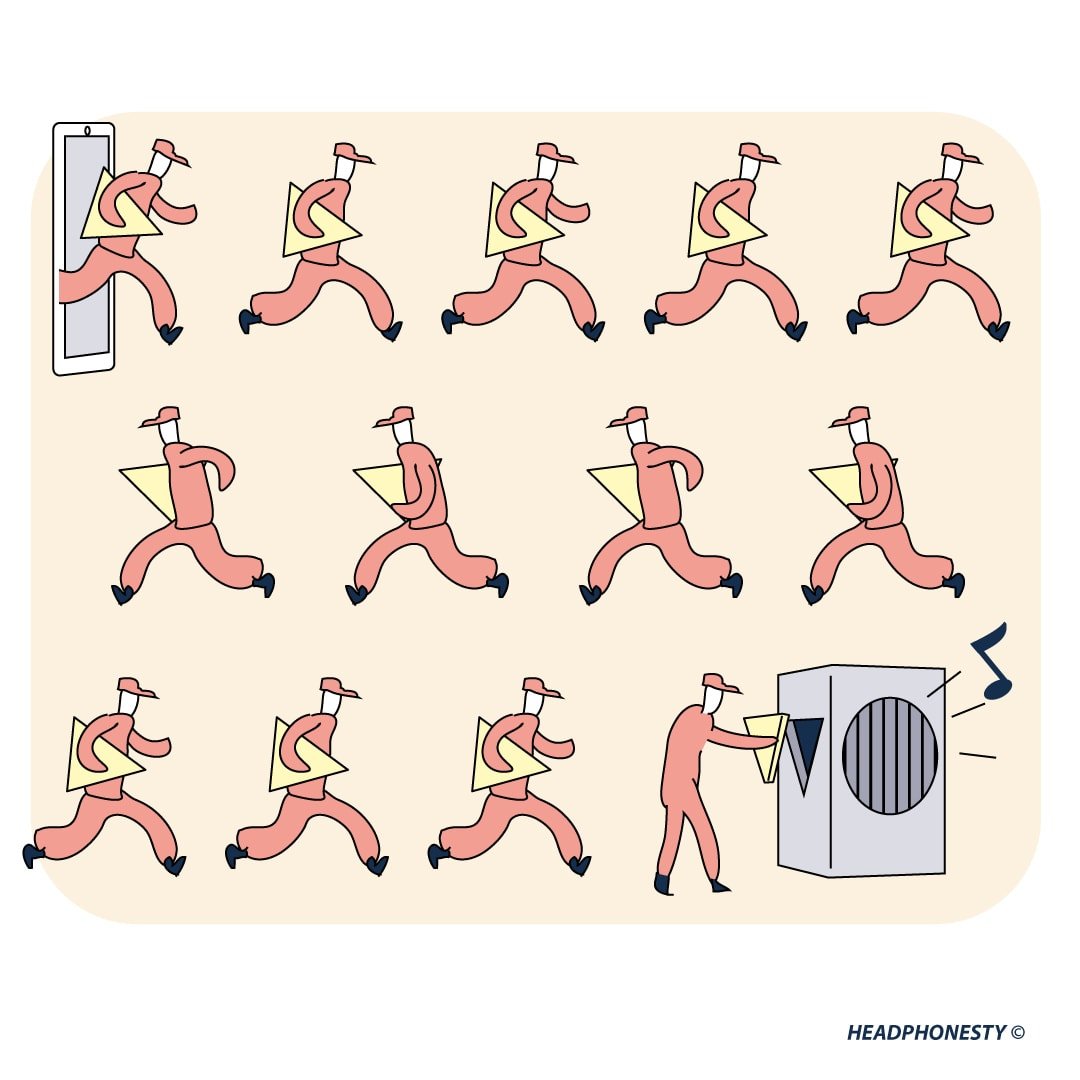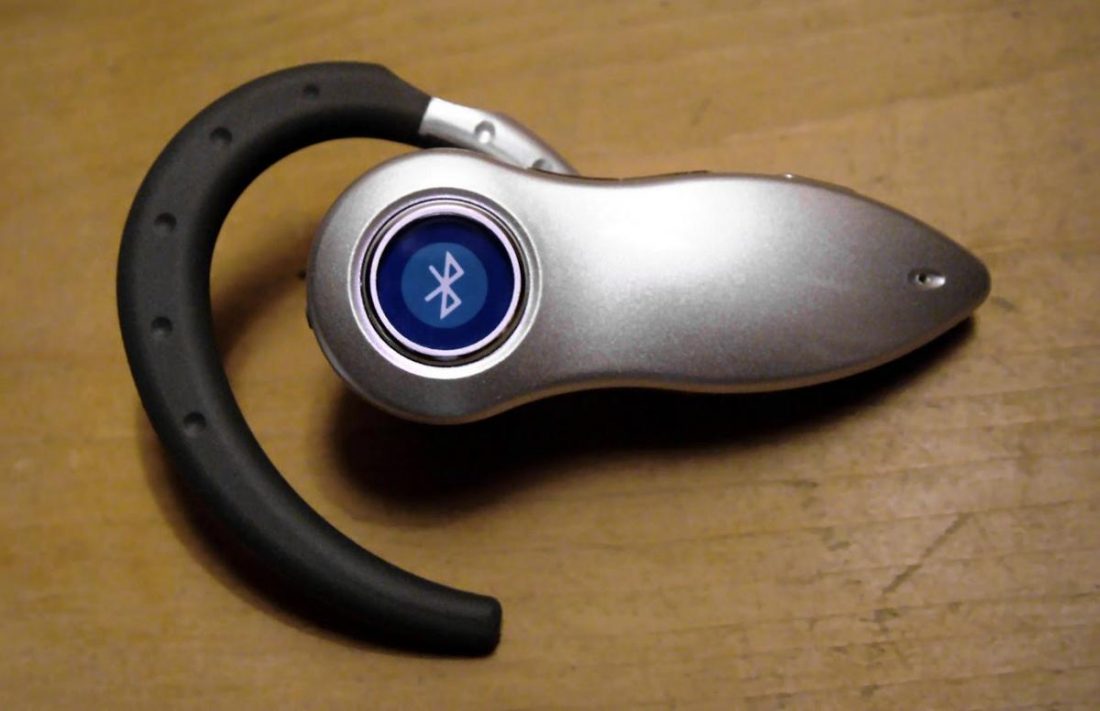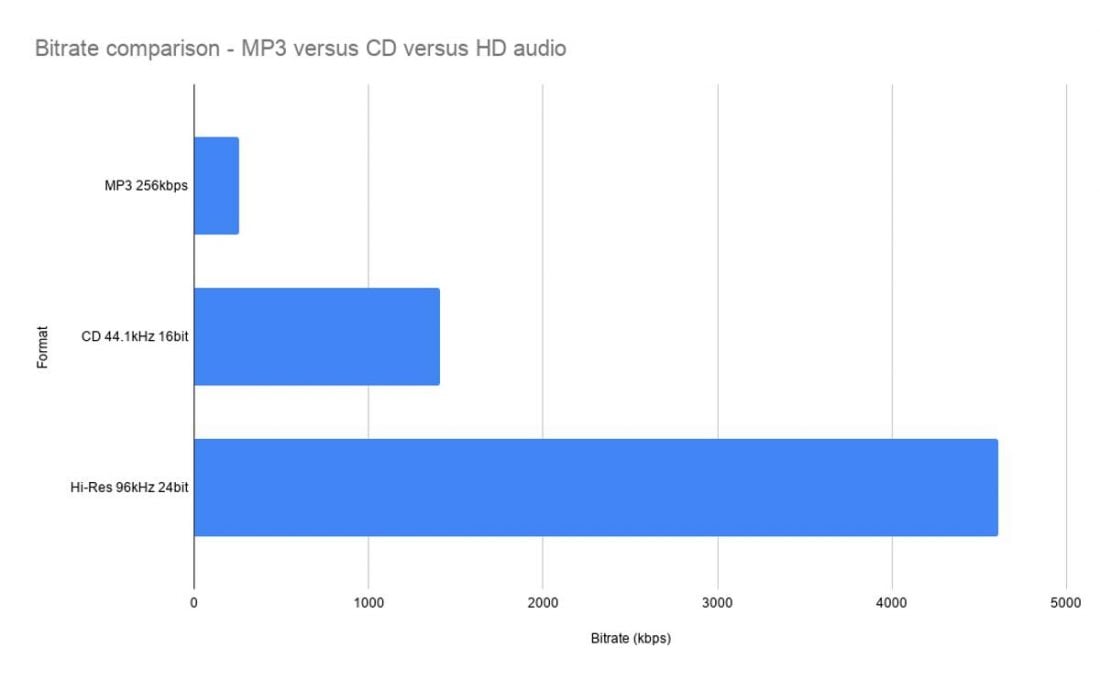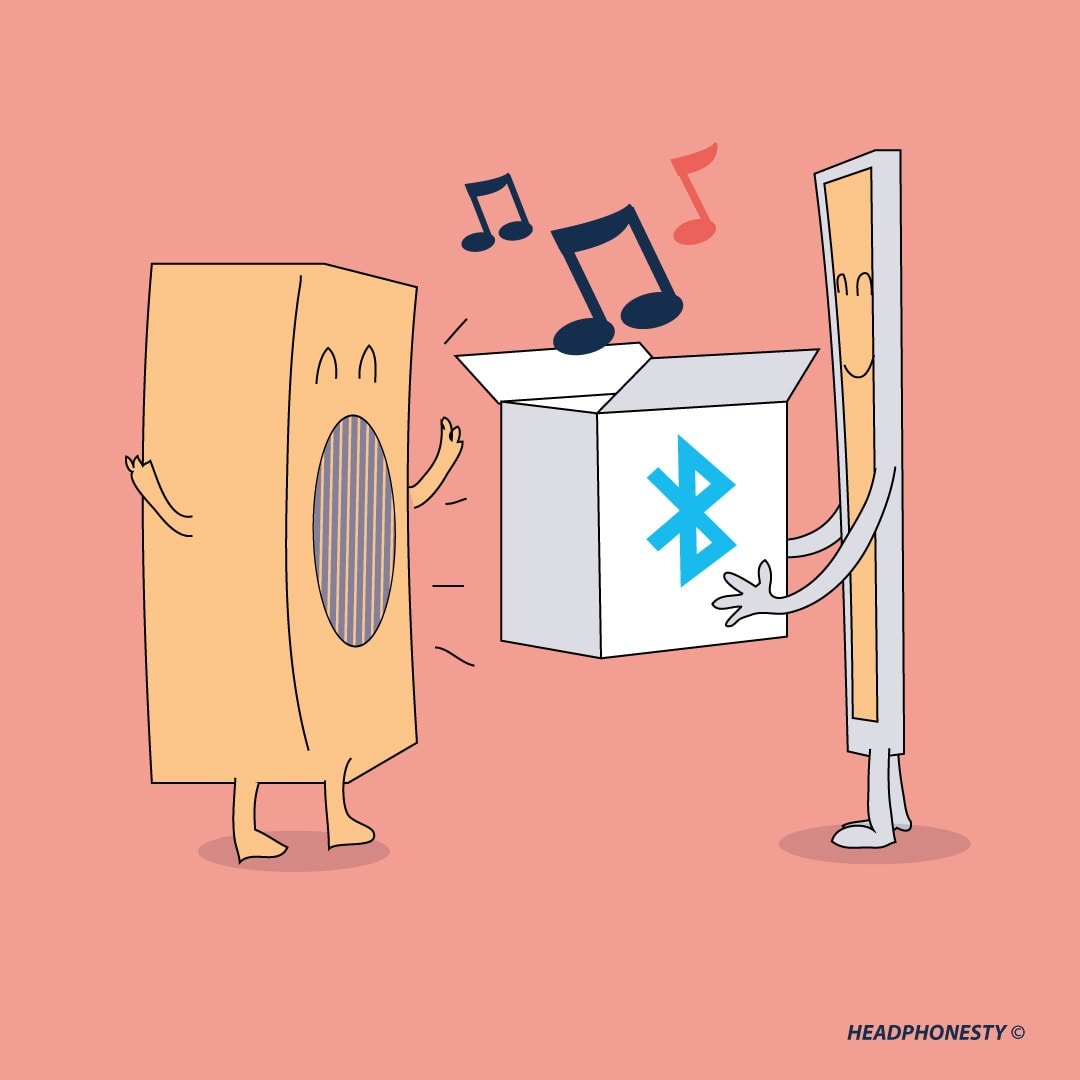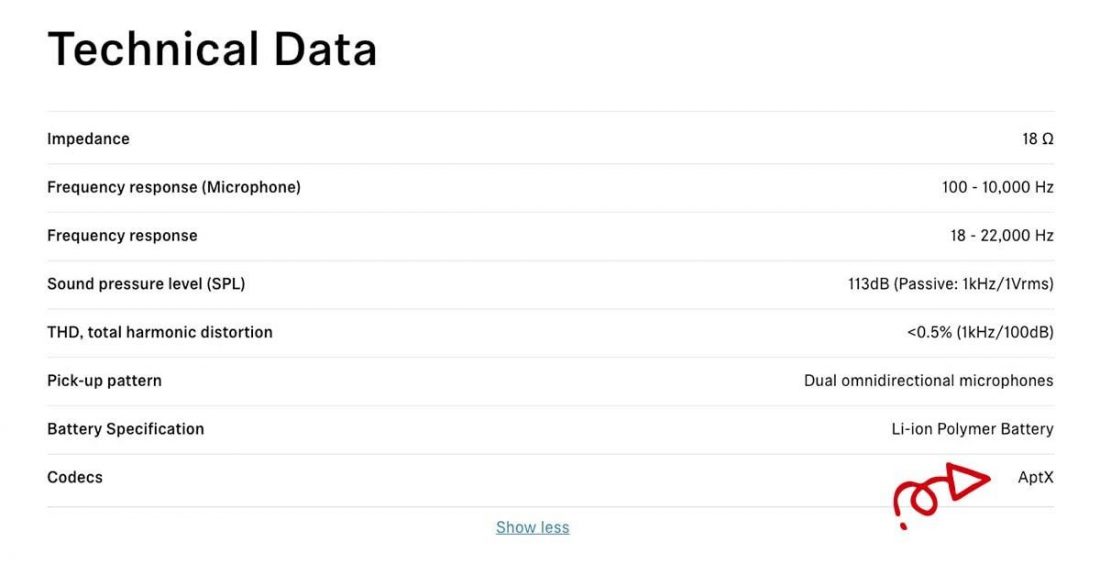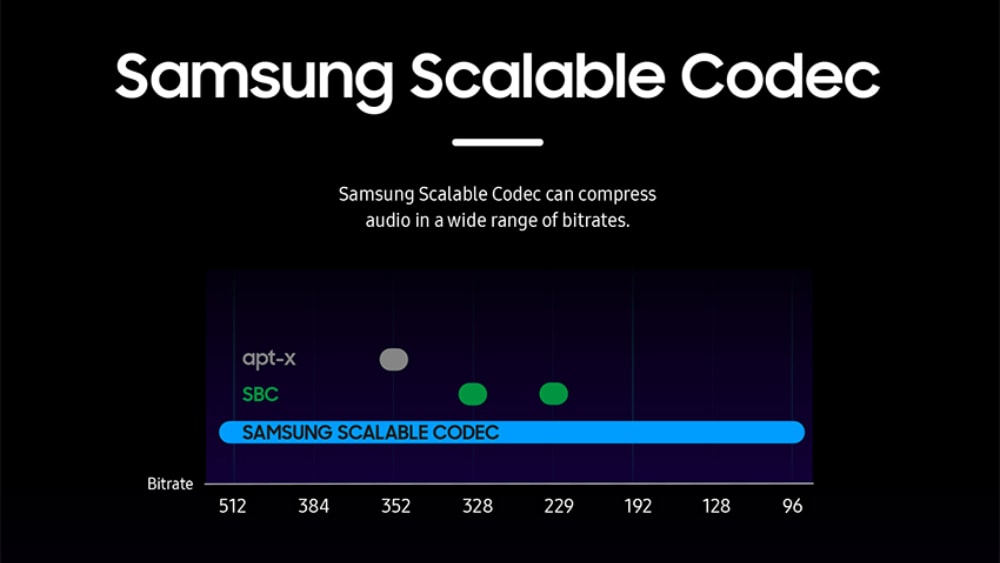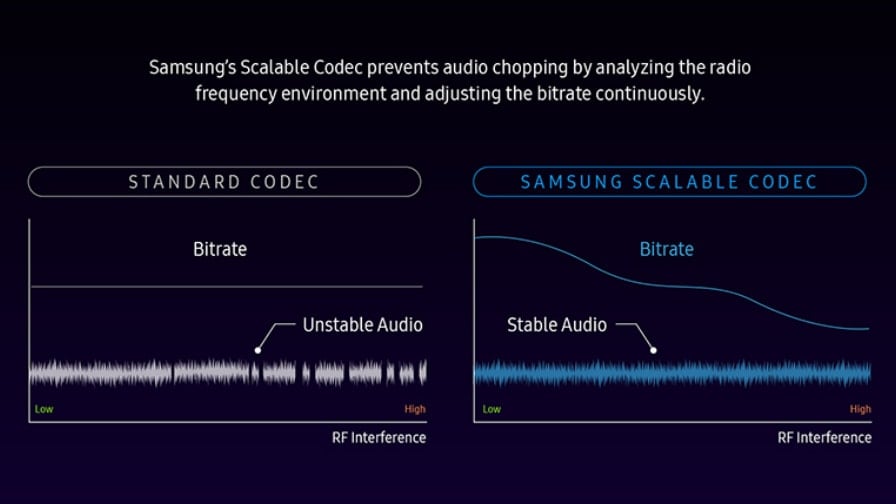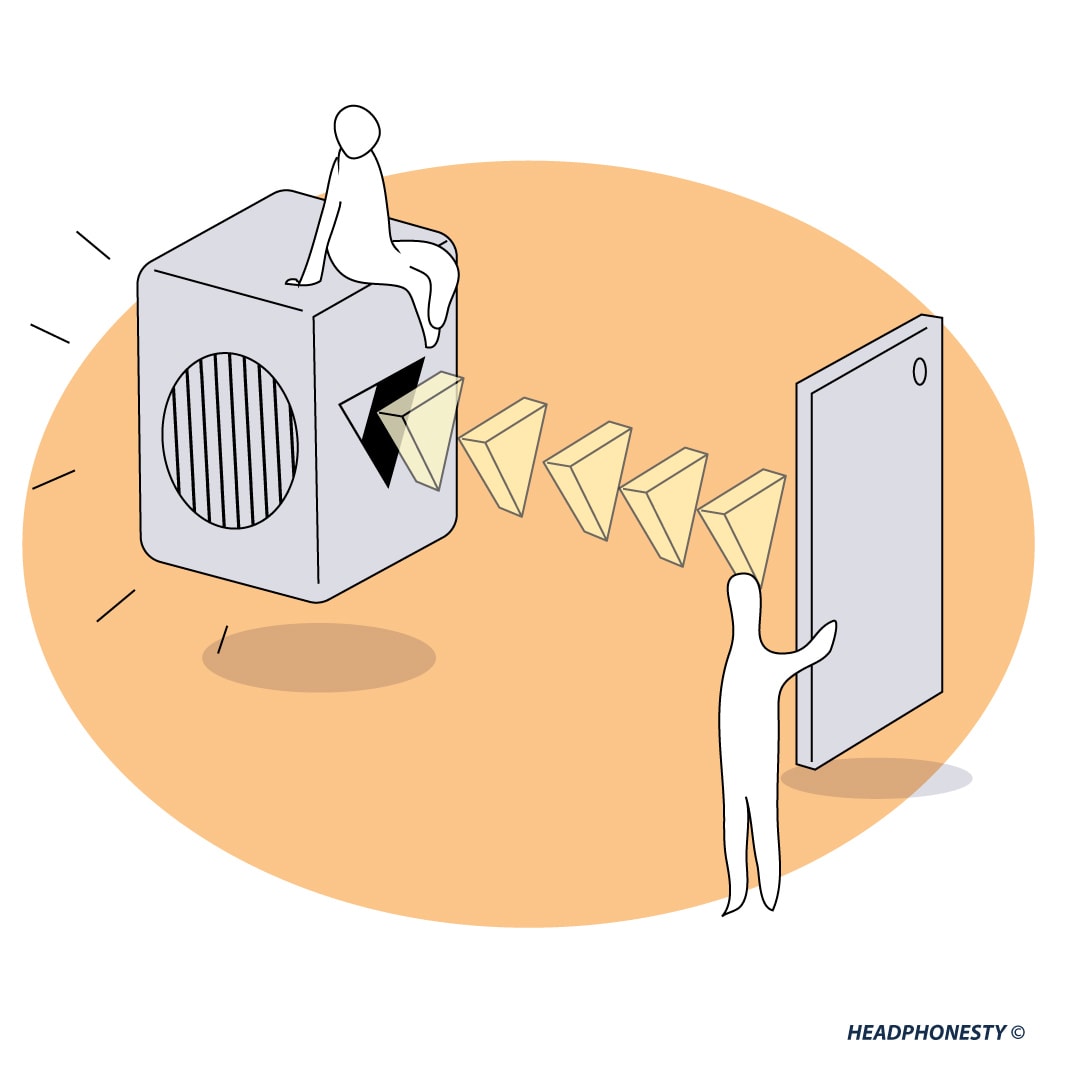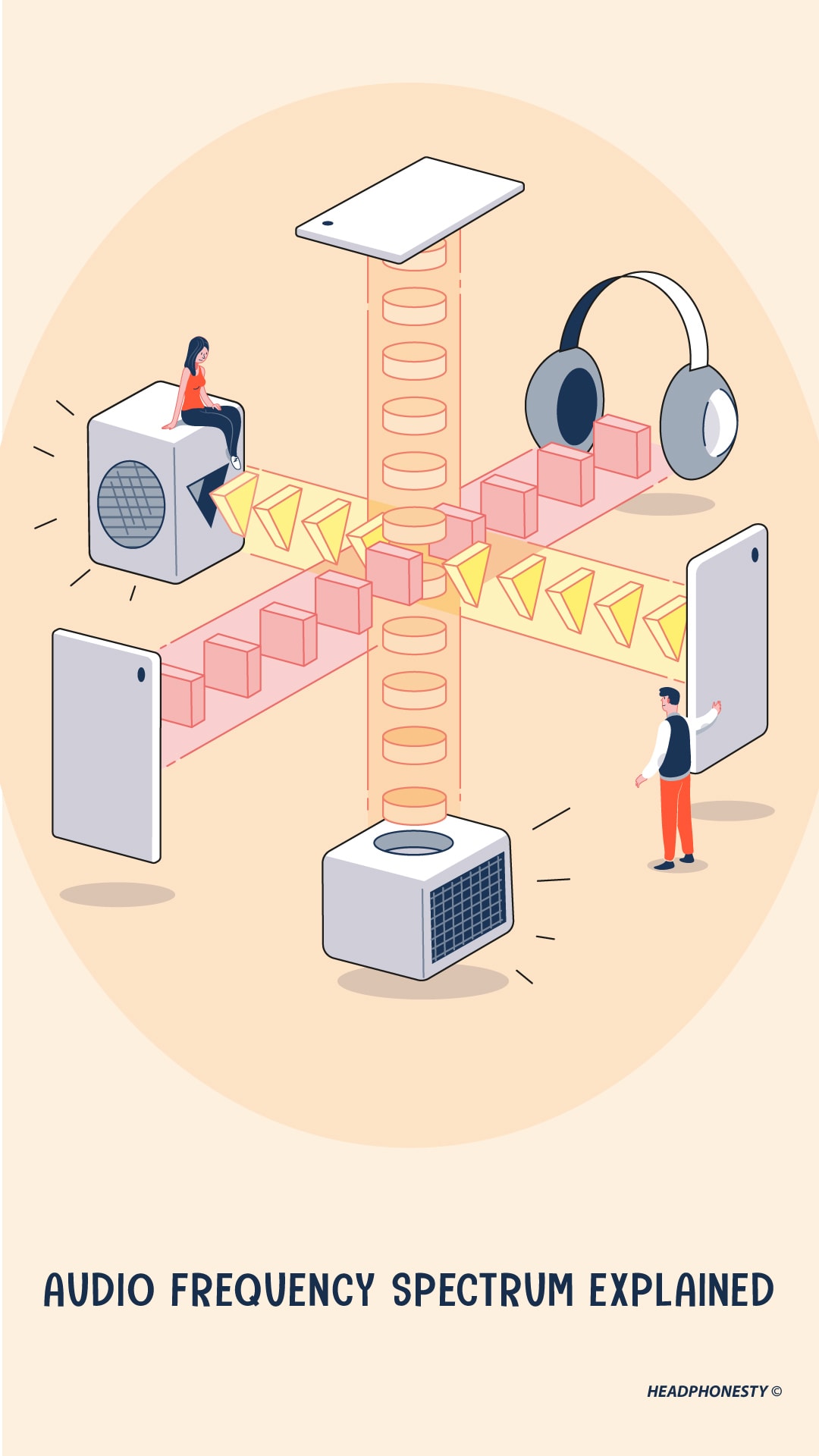Whether you are looking at wireless headphones for workouts, gaming, TV watching, or even to protect your ears from the noise, you must not overlook this important feature: Bluetooth audio codec. In this article, we will attempt to break down the mystery and jargons of Bluetooth audio codecs in a beginner-friendly way. We will also discuss:
How does wireless audio transmission work How does the Bluetooth audio codec affect audio quality and latency The different types of codecs and their characteristics And more!
Let’s dive right in.
The Journey of Wireless Audio Transmission
Types of wireless connection
Even before discussing the journey of wireless audio, we have to first talk about the type of wireless connection. Imagine you want to get from point A to point B, selecting the type of connection is similar to picking the type of transport (car, train, etc.) you want to complete your journey.
The Journey of Wireless Audio Transmission Types of wireless connection The journey begins Encoding and Decoding Enter the codec Basic Audio Terminology Other than Codecs, What Affects the Quality of Bluetooth Audio? Types of Bluetooth Codecs Codecs Comparison Table
In general, there are three types of wireless connection for headphones:
Infrared (IR) Radio Frequency (RF) Bluetooth (BT)
Since we are on the topic of Bluetooth audio codec, we will focus on the BT connection. But in general, the underlying mechanism is the same.
The journey begins
You first have a Bluetooth audio transmitter which is the audio source. In this case, it can be your phone. Next, you need a BT audio receiver, which can be your headphone or speaker. The transmitter’s job is not as simple as sending over the music file to the receiver. Depending on the quality of the recorded audio, it affects the audio’s file size. Higher quality recording equates to larger file size. The file size directly affects the bandwidth needed to transmit the audio over to the receiver. Think of bandwidth as the width of the traffic highway and the file size as the traffic flow. If the traffic flow exceeds what the highway allows, traffic jams occur and the journey becomes slow and unstable. A Bluetooth connection has a maximum bandwidth that it can accommodate. Lossless file formats like WAV and AIFF are huge in file size. If we were to plainly send these raw files wirelessly, the bandwidth will be eaten up, exceeding what the Bluetooth connection can handle. The audio connection will start to stutter, affecting the overall audio connection quality. This is where processes like encoding and decoding come in handy.
Encoding and Decoding
To reduce the size of the audio file, the BT transmitter encodes the original file with a special sauce (I believe scientists call them algorithms) into a compressed form. The compressed form itself is not a viable audio file. This is then sent over to the receiver. The BT receiver will decode the compressed form into an audio file which then becomes playable.
Enter the codec
So what is the special sauce that we mentioned above? It is actually, surprise, the audio codec. A codec is a piece of software, or algorithm, that takes your data (music), compresses it to reduce file size and encodes it in a format for transmission. The same codec is also required to decode the encoded data so that we can listen to our music. Reducing file size while maintaining the fidelity of the audio data is no simple task. Through psychoacoustic research and analysis, the codec disregard masked information in the music, information that can be removed without a noticeable loss in quality. Each Bluetooth audio codec has its own unique compression algorithm and also speed of transmitting the data. This affects the quality of wireless audio in terms of latency and fidelity. The common codecs that you will come across are the following;
SBC AAC aptX aptX HD aptX LL LDAC LC3 Samsung Scalable Codec
Before we dive into codec and their characteristics, we need to recognize and understand some basic audio terminology.
Basic Audio Terminology
When reading articles and specifications about Bluetooth codecs, there are some terms that will come up again and again. Let’s discuss these first. If you have some basic knowledge of digital audio, you may have come across these before.
Sample Rate
An audio signal is stored using pulse code modulation (PCM). In order to capture, store, and reproduce a signal accurately, snapshots, or samples of the incoming signal are taken at a specific rate, a sampling rate, measured in Hertz (Hz). In order to reproduce the full spectrum of a musical signal, a sampling rate of 44,100Hz, or 44.1kHz, is the minimum that is used. That’s 44,100 samples per second. You will also see higher sample rates used for music, 48kHz, 96kHz, and even 192kHz. There are many arguments for using higher sample rates than 44.1kHz. For most consumers, 44.1kHz is more than acceptable. It is the most commonly used rate for music. Using this sample rate allows accurate reproduction of frequencies up to 22050Hz, just above the limit of human hearing. Lower rates can be used when critical listening is not required, such as with speech.
Bit Depth
For music, the bit depths you will come across are 16bit and 24bit. While the sample rate is concerned with capturing frequency accurately, bit depth is related to dynamic range. Dynamic range is the distance between the quietest and loudest sounds in a piece of music, and the quality of the resolution within this range. For many years 16bit was the standard, the depth used on CDs. While 16bit is still very common, 24bit is now becoming more widely used for Hi-Res (HD) audio. Consumers can now purchase music in lossless formats that support higher sample rates and bit depths.
Bitrate
Bitrate is the measure of the rate at which data is transferred from one point to another. It is measured in bits per second (bps), kilobits per second (kbps), or megabits per second (Mbps). We also use bitrate to describe the fidelity of audio files. An MP3 file that was compressed at 320kbps, will have a much better dynamic range and sound quality to one compressed at 128kbps. With higher bitrate, audio files with higher bit depth and sample rate can be sent wirelessly, thus increasing the quality of the audio. However, this means an increase in bandwidth used for transmission. Codecs have the ability to alter the rate at which the data is being sent, directly affecting quality.
HD Audio
As internet speeds have increased and technology has developed, lossless formats have become more popular as a means to distribute and purchase music. Music streaming platforms like Qobuz and Tidal are already using lossless files. Digital HD formats such as FLAC, ALAC, WAV, and AIFF, are the choice of audiophiles and music collectors who are moving away from the physical medium. Which codec you use will inevitably be linked to the equipment you have. But if you are entering the world of Bluetooth audio, or upgrading, knowing the qualities of the different codecs is important.
Other than Codecs, What Affects the Quality of Bluetooth Audio?
Other the codecs itself, there are other factors that can directly affect the quality of the Bluetooth Audio:
Distance between the transmitter and receiver: The further the two devices are away from each other, the less stable the connection will be. This decreases the speed of transmission, thus resulting in stuttering audio. Keep the distance as close as possible. The number of blockages between the transmitter and receiver: Bluetooth can travel through the walls. But take note that once the signal pass through walls, the signal strength is attenuated and the range decreases. It doesn’t need to have line-of-sight between two devices but as least keep them within the same room. Having a lot of blockages may result in the issue where Bluetooth headphones are connected but has no sound. Electrical interference by other devices: As Bluetooth signals are electromagnetic waves, they can be affected by other interfering electromagnetic wave-emitting devices such as radio, mobile phones, etc. Bluetooth versions: Even though Bluetooth has now been the standard for wireless connectivity, it is still far from perfect. That’s why, Bluetooth’s manufacturers are still continuously upgrading its features and fixing bugs. Having a lower Bluetooth version may result in different audio problems that may have already been solved in latter versions.
Types of Bluetooth Codecs
SBC
Low demand for computing power Low power consumption Support 48kHz/16-bit audio files Supports bit rates up to 345kbps (realistically 256kbps) Universal compatibility
SBC or “Low Complexity Subband Coding” is the first Bluetooth codec introduced to transfer audio. It is integrated into the Advanced Audio Distribution Profile (A2DP) – a set of default Bluetooth specifications for streaming audio over Bluetooth. As such, every Bluetooth device you have will be compatible with this codec, and they will communicate with each other without any issues. Unlike nearly all the other codecs discussed here, SBC is public domain, so equipment manufacturers can use it for free. SBC has a bad reputation among the Bluetooth audio codecs for its high lossy compression algorithm and hence, overall lower audio quality. But in fact, SBC is a pretty flexible codec. It is able to support up to the 48 kHz sampling rate at 16-bit bit depth. It is also able to transmit data at rates as high as 345kbps. However, manufacturers don’t always take full advantage of SBC’s features or bandwidth, for reasons of improved device performance. A more realistic bitrate will be 256kbps which is roughly equal to the quality of MP3 recording. You will run into latency issues when using this codec for gaming and watching streams. This issue is not exclusive to this codec. If you’re not concerned about HD audio, and using lossless files, SBC will be totally fine. It’s efficient at what it does, so it will go easy on your battery. In noisy situations such as the gym or public transport or when you are only using lower-quality ear-buds, you won’t notice the difference between this and the codecs discussed below.
AAC
Better lossy compression algorithm than SBC Support 44.1kHz/24-bit audio files Supports bit rates up to 320kbps Android support (8+) Better implementation on iOS devices Power-hungry
Advanced Audio Coding (AAC) is a complex codec when compared with SBC, it uses more computing power and causes higher power consumption. When it applies lossy compression, it can produce better results than SBC. AAC is not in the public domain, so manufacturers have to pay the patent holders to implement it in their technology. There is a one-time payment fee of $15,000 ($1000 if the company has less than 15 employees) and $0.98 for the first 500,000 devices. Although it is the default codec on iOS devices, it is not owned by Apple. How each manufacturer implements it makes a big difference. Its implementation and audio quality are generally much better on iOS than Android devices. Some of its specs may look similar or less than SBC, but it is a more advanced codec, and you hear the benefit of that.
aptX
Better lossy compression algorithm than SBC Support 48kHz/16-bit audio files Supports bit rates up to 384kbps Supported in Android 4.4+ No iOS support
The aptX family of codecs is owned by Qualcomm. aptX was introduced as an alternative to SBC, and address complaints about SBC’s implementation and sound quality. It uses a different type of data compression to SBC and AAC – Adaptive Differential Pulse Code Modulation (ADPCM). Rather than using psychoacoustic analysis and masking to dump what’s deemed to be unnecessary, it codes the file in a different way to reduce the data bandwidth. Also not public domain, Qualcomm charges manufacturers to implement it. They also provides a record of all devices that implement its codecs. Manufacturers who wants to use aptX codec have to pay a one-time payment fee of $6000 and ~$1 per device.
aptX HD
Improved aptX encoding profile Support 48kHz/24-bit audio files Supports bit rates up to 576kbps Supported in Android 8+ No iOS support
aptX HD is not a standalone audio codec but instead, it is an improved aptX encoding profile. It supports higher bit depths and bit rates. The result of this is heard as better sound reproduction and less noise (more dynamic range). Despite these improvements, it is not as widely adopted by manufacturers as the standard aptX.
aptX LL
Low latency (~ 32ms) Supports bit rates up to 352kbps Support 44.1kHz/16-bit audio files No smartphones support
Just like the aptX HD, the aptX LL is not a standalone codec. The LL stands for low latency. This codec solves the latency issue, or at least vastly improves it compared to the other codecs. Latency, is the delay introduced due to the processing of the audio. It’s the delay between the data being encoded, transmitted, and received, and will cause an obvious delay in gameplay, and dialogue sync in films and TV. Other than the aptX LL codec, latency is a common issue with other codecs. For just pure music listening, the latency is not much of an issue. But for gaming or watching films, the latency becomes significantly obvious because you can visually see the non-sync problem. However, make sure your audio source supports the same audio codec. Otherwise, they will default back to the common codec that they share (most probably SBC). Currently, there are no mobile phones that support aptX LL. There is better support on Windows desktop.
LDAC
Support 96kHz/24-bit audio files Supports bit rates up to 990kbps Android support (8+) Limited headphone options
The LDAC codec is developed by Sony. It offers the potential to offer near-lossless audio quality. Both your transmitting and receiving device need to be able to firstly support the codec, but then they also need to be able to deal with the large data bandwidth being sent and received. Signal strength always plays an important part when you are using the LDAC codec. As this codec uses more data, any interference with the signal will reduce the bandwidth, consequently resulting in a drop of the signal quality. The benefits of LDAC’s HD capabilities will then be lost. Probably due to licensing issues, wireless headphones that support LDAC codec are only Sony headphones.
LC3
LC3, or LE (low energy) Audio, also known as Low Complexity Communications Codec, is the new default Bluetooth codec, introduced at the CES 2020 trade show. As it has just been introduced, the full spec is not available yet. It claims to be the “next generation of Bluetooth audio”, building on innovations from the last 20 years. The information that has been shared claims that vast improvements have been made in the areas of;
Audio Quality Latency Power consumption Audio Sharing (new feature)
If all this is true, it will be a game-changer for the user. With the Bluetooth headphone market continuing to expand, these new features might end the need for wired headphones. All the codecs discussed here are still relevant as it will take some time to implement and roll-out new tech that supports the LC3 codec.
Samsung Scalable Codec
This codec is a proprietary codec developed by Samsung for its Galaxy Buds – a True Wireless earbud. As expected, only Samsung devices support this codec. The unique thing abt the Samsung Scalable Codec is its ability to support a wide range of bitrate. It can adaptively switch bitrate, depending on the stability of the Bluetooth connection, to maintain stable connection and reduce choppy audio. As the strength of the Bluetooth connection weakens, the audio codec will intelligently increase the compression ratio while lowering the bitrate. This might lower the overall audio quality but at least the connection does not get cut off.
Comparison of the Codecs
Here’s a table to let you easily compare the different characteristics of the codecs mentioned in this article.
Conclusion
Based on my technical knowledge and additional research carried out for this article it has to be said that there is conflicting online information on this topic. Some of this is the result of the amount of information, or lack of, that manufacturers give out regarding how they implement the codecs they use. The other is the ability to test what the manufacturers and codecs claim to do. With the multitude of configurations between transmitters and receivers available, it’s hard to reach a consensus. Some codecs offer advantages over others, this relates to;
Bandwidth – directly impacts the audio quality Sample rate/bit depth support – lossy, lossless, HD audio Listening habits – headphone type, latency, environment Headphone type/style versus audiophile requirements Audio source – the audio quality of your source, and the device you use (PC, Mac, Gaming consoles like Xbox One, Nintendo Switch, etc)
So codecs matter. They are something you should inform yourself about in order to get the performance, and listening experience you are after.
Pin This Image To Save The Article
